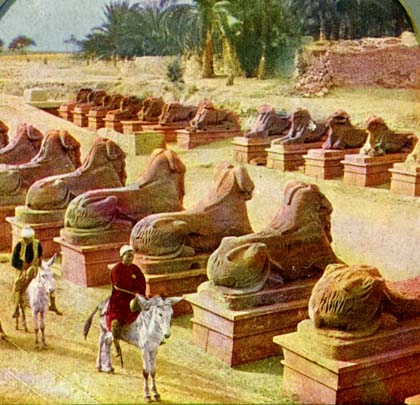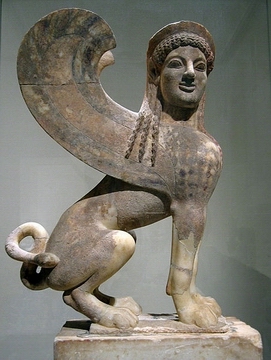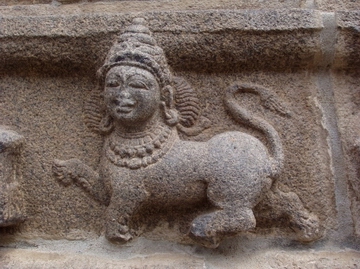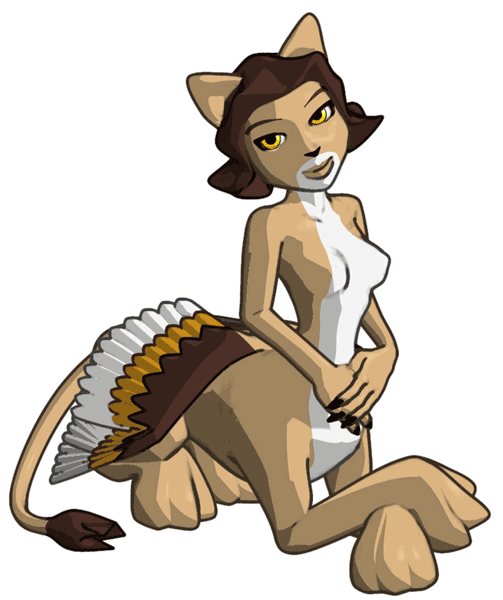A
sphinx is a zoomorphic mythological figure, which is depicted as a
recumbent lion with a human head. It has its origins in sculpted figures
of Old Kingdom Egypt, to which the ancient Greeks applied their own name
for a female monster, the “strangler”, an archaic figure of Greek
mythology. Similar creatures appear throughout South and South-East Asia.
In European decorative art, the sphinx enjoyed a major revival from the
Renaissance onwards.
Egyptian
sphinxes
In
Ancient Egyptian mythology, a sphinx is a zoomorphic figure, usually
depicted as a recumbent lioness or lion with a human head, but
occasionally as a lion with the head of a falcon, hawk, or ram. The figure
had its origin in the Old Kingdom and is associated with the solar deity
Sekhmet. The use of heads of other animals atop the lioness body followed
the titular deities of the city or region where they were built or which
were prominent in the Egyptian pantheon at the time.

Avenue of ram-headed sphinxes
at Karnak in Luxor dating to the eighteenth dynasty
Later,
the sphinx image, something very similar to the original Egyptian concept,
was exported into many other cultures, albeit often interpreted quite
differently due to translations of descriptions of the originals and the
evolution of the concept in relation to other cultural traditions.
Generally the role of sphinxes was as temple guardians; they were placed in association with architectural structures such as royal tombs or religious temples. Perhaps the first sphinx was one depicting Hetepheres II, of the fourth dynasty that lasted from 2723 to 2563 BC. The largest and most famous is the Great Sphinx of Giza, sited at the Giza Plateau on the west bank of the Nile River and facing due east, is also from the same dynasty. Although the date of its construction is uncertain, the head of the Great Sphinx now is believed to be that of the pharaoh Khafra.
What
names their builders gave to these statues is not known. At the Great
Sphinx site, the inscription on a stele erected a thousand years later, by
Thutmose IV in 1400 BCE, lists the names of three aspects of the local sun
deity of that period, Khepera-Rê-Atum. The inclusion of these figures in
tomb and temple complexes quickly became traditional and many pharaohs had
their heads carved atop the guardian statues for their tombs to show their
close relationship with the powerful deity, Sekhmet.



